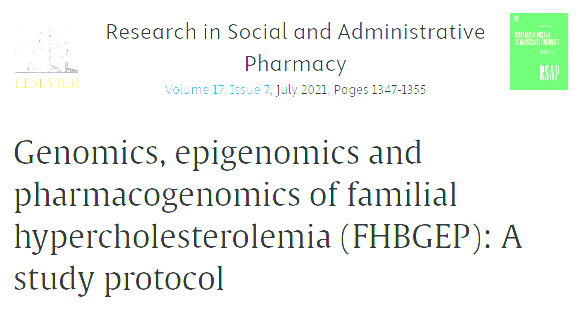Identification of pathogenic variants in the Brazilian cohort with Familial hypercholesterolemia using exon-targeted gene sequencing
Familial hypercholesterolemia (FH) is a monogenic disease characterized by high plasma low-density lipoprotein cholesterol (LDL-c) levels and increased risk of premature atherosclerotic cardiovascular disease. Mutations in FH-related genes account for 40% of FH cases worldwide. In this study, we aimed to assess the pathogenic variants in FH-related genes in the Brazilian FH cohort FHBGEP using exon-targeted gene sequencing (ETGS) strategy. FH patients (n = 210) were enrolled at five clinical sites and peripheral blood samples were obtained for laboratory testing and genomic DNA extraction. ETGS was performed using MiSeq platform (Illumina). To identify deleterious variants in LDLR, APOB, PCSK9, and LDLRAP1, the long-reads were subjected to Burrows-Wheeler Aligner (BWA) for alignment and mapping, followed by variant calling using Genome Analysis Toolkit (GATK) and ANNOVAR for variant annotation. The variants were further filtered using in-house custom scripts and classified according to the American College Medical Genetics and Genomics (ACMG) guidelines. A total of 174 variants were identified including 85 missense, 3 stop-gain, 9 splice-site, 6 InDel, and 71 in regulatory regions (3'UTR and 5'UTR). Fifty-two patients (24.7%) had 30 known pathogenic or likely pathogenic variants in FH-related genes according to the American College Medical and Genetics and Genomics guidelines. Fifty-three known variants were classified as benign, or likely benign and 87 known variants have shown uncertain significance. Four novel variants were discovered and classified as such due to their absence in existing databases. In conclusion, ETGS and in silico prediction studies are useful tools for screening deleterious variants and identification of novel variants in FH-related genes, they also contribute to the molecular diagnosis in the FHBGEP cohort
Authors
Borges JB, Oliveira VF, Dagli-Hernandez C, et al.
External link
Publication Year
Publication Journal
Associeted Project
Microbiology or Immunology
Lista de serviços
-
StructRNAfinder: an automated pipeline and web server for RNA families prediction.StructRNAfinder: an automated pipeline and web server for RNA families prediction.
-
CEMiTool: a Bioconductor package for performing comprehensive modular co-expression analyses.CEMiTool: a Bioconductor package for performing comprehensive modular co-expression analyses.
-
webCEMiTool: Co-expression Modular Analysis Made Easy.webCEMiTool: Co-expression Modular Analysis Made Easy.
-
Assessing the Impact of Sample Heterogeneity on Transcriptome Analysis of Human Diseases Using MDP Webtool.Assessing the Impact of Sample Heterogeneity on Transcriptome Analysis of Human Diseases Using MDP Webtool.
-
Predicting RNA Families in Nucleotide Sequences Using StructRNAfinder.Predicting RNA Families in Nucleotide Sequences Using StructRNAfinder.
-
OUTBREAK: a user-friendly georeferencing online tool for disease surveillance.OUTBREAK: a user-friendly georeferencing online tool for disease surveillance.
-
Noninvasive prenatal paternity determination using microhaplotypes: a pilot study.Noninvasive prenatal paternity determination using microhaplotypes: a pilot study.
-
Editorial: User-Friendly Tools Applied to Genetics or Systems Biology.Editorial: User-Friendly Tools Applied to Genetics or Systems Biology.
-
Automatic detection of the parasite Trypanosoma cruzi in blood smears using a machine learning approach applied to mobile phone imagesAutomatic detection of the parasite Trypanosoma cruzi in blood smears using a machine learning approach applied to mobile phone images
-
Tucuxi-BLAST: Enabling fast and accurate record linkage of large-scale health-related administrative databases through a DNA-encoded approachTucuxi-BLAST: Enabling fast and accurate record linkage of large-scale health-related administrative databases through a DNA-encoded approach
-
Ten quick tips for harnessing the power of ChatGPT in computational biologyTen quick tips for harnessing the power of ChatGPT in computational biology

